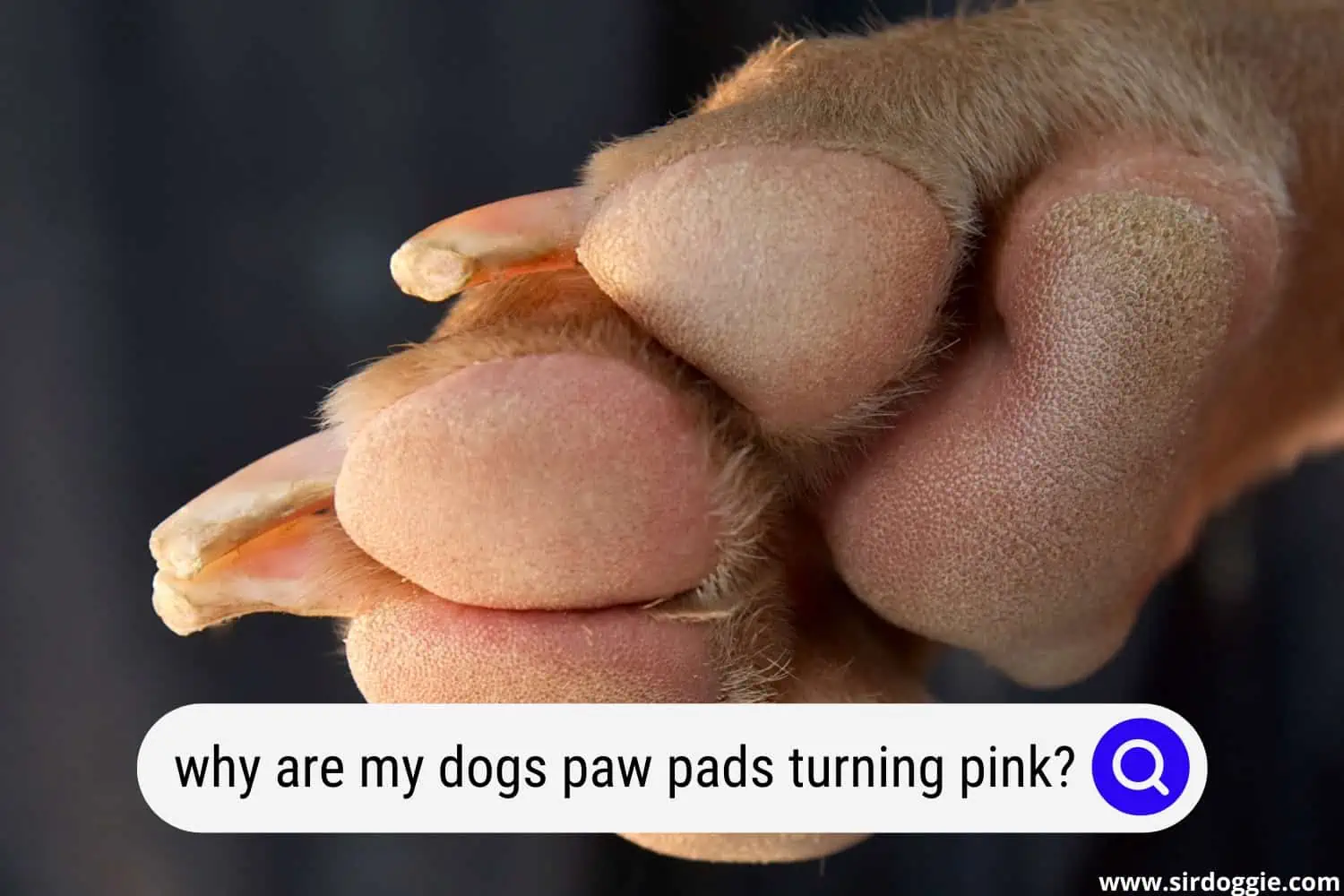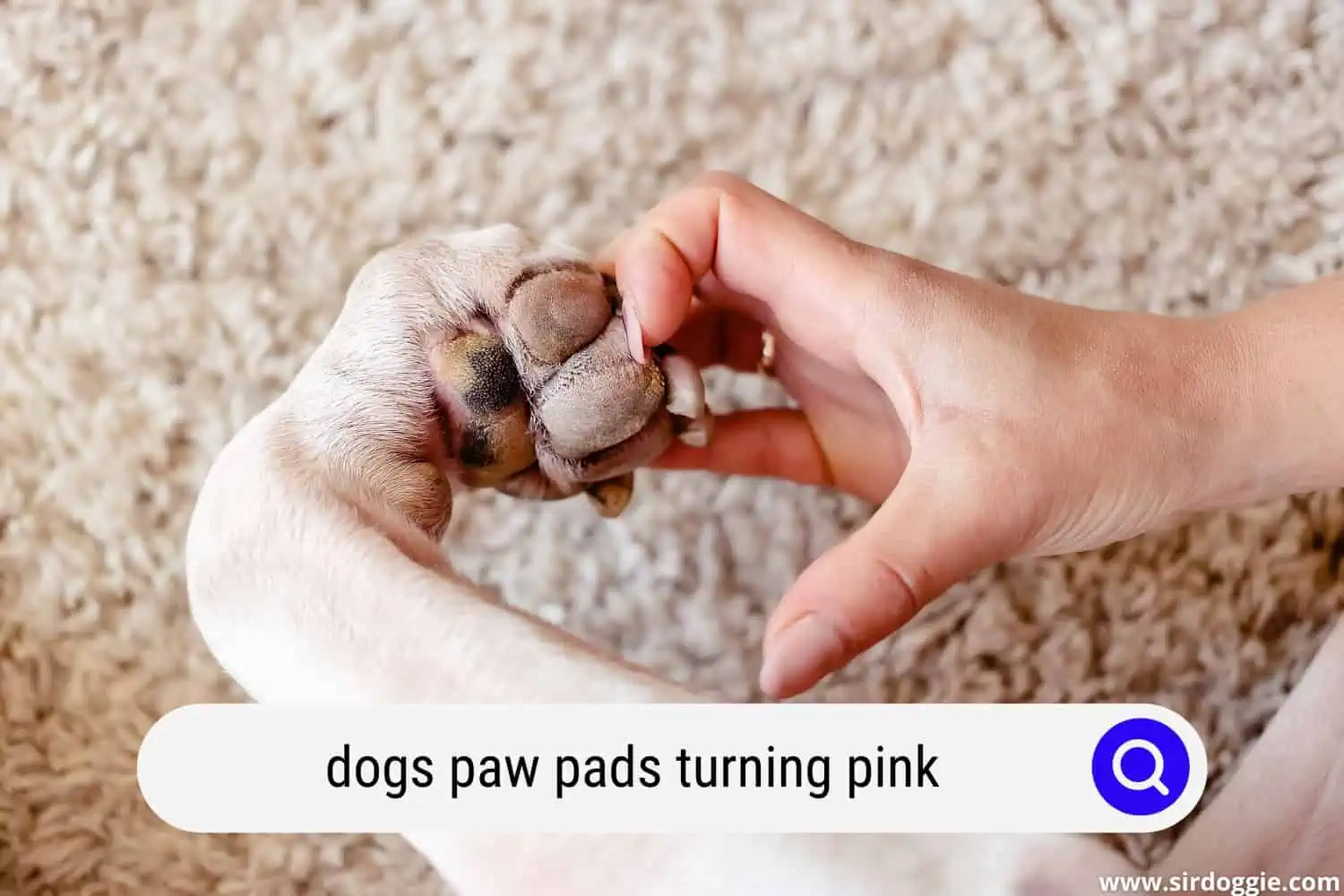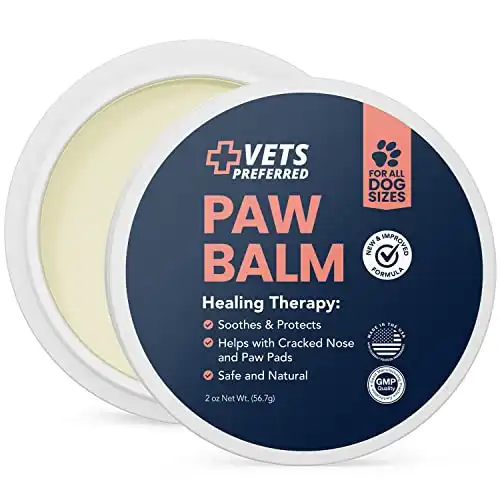Why Are My Dog’s Paw Pads Turning Pink?
Are you wondering why your dog’s paws are pink and black? The simple answer is that pink and black may just be the natural coloration of your dog’s paws. It’s common to see pink and black paw pads in puppies that are growing tough outer skin for rougher terrain. It can also be an indication that the paw pads on an adult dog are ready to come off.

There are several other reasons why a dog’s paw pads turn pink. It could be due to an allergic reaction of one kind or another, infection, lesion, or a host of other issues that may crop up due to various situations to which your dog may have been exposed.
The condition of a dog’s paws is important because they spend most of their time on their paws when standing, running, and/or walking. A dog’s paw pads make it possible for them to grip surfaces, provide insulation to their feet, give them balance, and are shock absorbers for their legs and feet when running or jumping.
The following points are some reasons why your dog’s paw pads may have turned pink:
- Allergies
- Fungal Infections
- Bacterial Infections
- Burns and Blisters
- Cysts, Lumps, and Growths
When the paw pads of your favourite pet suddenly begin to turn pink the animal will likely be in a lot of pain which will negatively impact their ability to place their full weight on their paws and walk normally.
You must read on to see some possible reasons stated below why your pet’s paw pads are in such a state.
Allergies
An allergy is a hypersensitivity or unusual sensitivity to a substance such that when it is breathed in, ingested, or comes in contact with the skin it provides a strong reaction from the body. Beloved pets, such as dogs, can also suffer from different sorts of allergies.
Usually, a dog suffering from some type of allergic reaction will have itchy paws, and will often try to get some relief by licking, biting, or chewing on its paws.
In addition to this, the animal will probably have other accompanying issues such as skin and ear infections as well problems with the anal gland. It is a vicious cycle of sorts because too much licking by the dog will cause more harm and inflammation.
Experts and authorities who provide animal health care will tell you that food and grass are often responsible for a host of allergic reactions by dogs. The inflammation shows up more easily if the dog’s paw pads or fur are light in color.
When you notice such reactions, a good first response is to eliminate all grains from their diet. This is because grains have been known to be a major cause of allergic responses in dogs.
An allergic reaction tends to be a bright pink or a rusty red discoloration and will result in the dog licking and chewing both feet obsessively, unlike cases of injury which will usually affect only one foot.
Dogs suffering from allergies usually lose hair around their mouth and nose from constant licking or chewing and may end up limping if the pain increases.
Furthermore, the animal’s paws will be more prone to developing fungal and bacterial infections as a result of the licking and chewing. When your dog licks its paws excessively, it is a sign that all is not well and the pet should be taken to your vet as soon as possible for an examination. Avoid a hefty unforeseen vet bill by signing your fur baby up for pet insurance from the get-go.

Fungal Infections
Fungal infections in dogs are not as common as bacterial or viral infections but can be just as serious and debilitating. Generally, fungal infections can be contracted by dogs from the environment, other animals, or due to the overgrowth of fungi naturally present in their bodies.
Fungal infections such as yeast dermatitis will usually affect the skin between a dog’s toes and other skin folds. This is what often causes the redness, brown discoloration, itching, and slimy discharge seen in dogs around their paws and toenails.
Yeast infections often present themselves as a secondary infection to a much more fundamental condition or problem known as atopic dermatitis. The indicators that the dog’s health has been compromised show up much more on the paw pads and feet than on other parts of the body. Atopic dermatitis, which is a form of inflammatory skin disease in dogs, is often related to allergens present in the environment.
Blood, as well as skin test results, carried out on your dog by your vet will show the specific allergens causing atopic dermatitis. The good news is that this condition can be easily managed so it should be treated as quickly as possible to ensure that Fido’s good health is restored.
Ringworm, which is a common fungal infection in dogs, is found in the soil. Usually, your pet will contract the infection outdoors at places like dog parks. The best way to diagnose this condition accurately, to treat it properly, is by having your vet perform a fungal culture of the hair or skin cells of the dog or do a microscopic examination of a hair sample.
Bacterial Infections
Bacteria, which is normally present in a healthy dog, is kept under control by the animal’s immune system. An imbalance resulting in a bacterial infection is an indicator of the fact that there is a fundamental hidden problem.
This state of affairs could probably be due to atopic or allergic dermatitis. A major culprit is a condition known as interdigital furunculosis or abscesses (localized infection of the skin) between the toes. This shows up as a painful blister filled with pus, affects the webbing between a dog’s toes, and is caused by a deep bacterial infection.
Several dog breeds are susceptible to this type of bacterial infection. These include:
- Labrador Retrievers
- English Bulldogs
- Chinese Shar-Peis.
These dog types have short bristly hairs on the webbing between their toes. What often happens is that the short hair shafts are easily forced backward into the hair follicles while the dog is walking.
These ingrown hairs then cause inflammation on the skin leading to secondary bacterial infections. In addition, if foreign matter such as a splinter or the rough edge of a piece of metal gets lodged in the skin the hair shaft can become infected.
Interdigital furunculosis or furuncles are very painful and usually will make the dog lame or limp on the affected foot or feet, as the case may be. It usually occurs on the front foot and several new furuncles may come up as others heal.
This is because a bacterial infection is the root source of the problem. Treatment for such a condition, which is broad-based and comprehensive, may range from draining the paw pad or foot of pus, application of antibiotics, soaking the paws in warm water, and, as a last resort, surgical excision or correction of the webbing on the dog’s foot or feet.
Furthermore, bacteria that naturally occur in the water and soils of freshwater, saltwater, and estuarine environments can enter the animal’s body through cuts and punctures on the dog’s paw pads.
Some of the links in this post are affiliate, and we may earn a commission.
Burns and Blisters
Walking your pet on extremely hot surfaces like pavement and asphalt roads can make them suffer burns on their paw pads. When a dog’s paw pads are burned they will look swollen, blistered, and have a red or pink coloration.
Burns can result in a serious medical condition and your dog should be taken to a vet for prompt medical attention to arrest the situation as quickly as possible.
A good rule of thumb to apply is that any surface too hot for you to walk on barefoot is also too hot for your dog or pet. Always try to touch the surface with your hand to feel the intensity of the heat before allowing your dog to walk on it.
If you cannot hold your palm to the surface for 10 seconds or more, then it is safe to say the surface is too hot for your dog to walk on.
Cysts, Lumps, and Growths
Cysts, lumps, and growths can show up on your dog’s paws and in between your pet’s toes. Cysts; which are pockets of fluid or other material beneath the skin, or comedones; which are clogged hair follicles, are common occurrences on the webbing between the toes of a dog.
This usually causes the dog to limp and gives rise to leaking sores between the toes of the animal. Whenever you observe this on the toes of your pet you should contact your vet as quickly as possible to treat this condition appropriately.
Treatments range from having the dog undergo a biopsy to properly diagnose the cause of the anomaly to the application of laser therapy and suitable antibiotics.

In Conclusion
As you have seen in this article, there are many possible explanations as to why your dog’s paw pads have turned pink. It is good to be on the lookout for any major changes to your dog’s paws and gait and it is a good idea to check them over before or after every walk to avoid exacerbating any issues that may have arisen.
To determine why your dog is having an issue with their paws and ensure appropriate treatment, it is always a good idea to take them to the vet to be examined when they are showing persistent discomfort or major changes like bright pink paws.
What other common issues would you like to see us highlight? Drop us a comment and let us know!
Related Reading: Why Does My Dog Look Pink At Night?

Family Dog Expert Author
Hi there! I’m Stuart, a devoted dog lover and family dog expert with over a decade of experience working with our furry companions. My passion for dogs drives me to share my knowledge and expertise, helping families build strong, loving bonds with their four-legged friends. When I’m not writing for SirDoggie, you’ll find me hiking, playing with my beautiful dog, or studying music.
